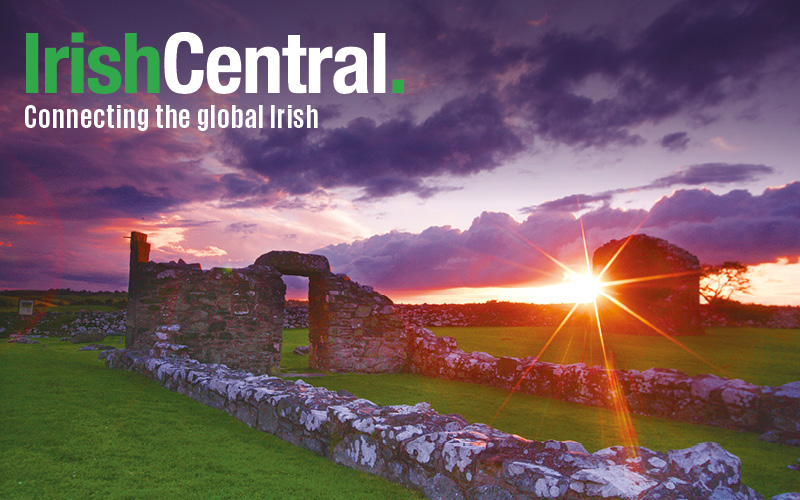Narrated by Gabriel Byrne, Butte, America is a documentary that tells the story of the most profitable hard rock mining town in American history. Through historical narrative and interviews with mine survivors and their families, the film captures the pioneering spirit that drew men to work in the mines, the emotional ties that formed in mining communities, and the powerful hold that the mining companies had over every aspect of their lives.
“I never said goodbye in the morning, going to work. I’d say see ya, so long. Never goodbye,” says John T. Shea, an Irish ironworker, in the opening moments of Butte, America.
This cheerful spirit belies the underlying knowledge all the miners must have had that their work could mean an early death for them. Butte’s mines were statistically the most dangerous in the world, and required immense manpower to operate. In the early 1870s, Butte was a mining town
on the verge of becoming a city full of immigrants in search of employment and the American Dream. When the advent
of electricity demanded more copper,
the “Copper Kings,” industrialists Clark, Daly and Heinze, called for more
manpower, pushing Butte’s population near 90,000. Immigrants flowed in from Ireland, England, Lebanon, Canada, Finland Austria, Italy, China, Montenegro, Mexico, and more: the “no smoking” signs in mines were written in sixteen languages.
The Irish, however, felt a special connection to Butte. Beginning their immigration during Famine times, many came from the Beara Peninsula where they had mined before leaving for America. They arrived in Butte by way of Nevada’s Comstock Lode, Penn-sylvania’s coalfields, and Michigan’s copper mines. They arrived from Cork, Mayo, and Donegal. According to David Emmons’s book The Butte Irish, 12,000 of Irish descent were living in Butte
by 1900, where the population was then 47,635. At a quarter of the population, Irish made up a higher percentage
in Butte than they did in any other American city at the turn of the last century. Seventy-seven various families of Sullivans left Castletownbere, Cork and came to Butte. By 1908 Butte hosted 1,200 Sullivans.
The land in Butte was owned by the mining companies, and mining families paid ground rent to live there. As the companies fought for control of the fruitful mines, the larger companies expanded into railroads, logging and other industries, pushing their smaller competitors out of business. Monopolies meant that corporations held greater and greater power over the families that lived in mining towns, and unions could do little to change the occupation’s hazards. Butte was awash with widows raising large families alone, left with no insurance or income. The women held several jobs, and children contributed to the workforce as soon as they were able, ushering in the age of newsboys. Some 16,000 miners worked in the connected honeycomb of mines that lay underneath Butte, all with beautiful names that belied what went on underground: Anselma, Alice, Lexington, Bell Diamond, Mountain View, Moonlight, Silverbowl, and on and on.
In 1899, Copper King Marcus Daly joined with William Rockefeller, Henry Rogers and Thomas Lawson to form the Amalgamated Copper Mining Company, which soon changed its name to Anaconda Copper Mining Company. Marcus Daly was born in 1841 and raised near Ballyjamesduff in Co. Cavan. In Butte, he found a rich and plentiful source of precious metals, and became one of the wealthiest men in the West when demand for copper rose. He was known for his tendency to hire Irish whenever possible.
Known simply as “The Company,” by 1914 Anaconda Company had become the fourth largest corporation in the country and had full control of Butte. They controlled town and state legislatures, and miners were pushed to increase production. Under the stress, the miners’ union splintered into smaller factions, none of which were acknowledged by Anaconda. After 1905, Butte was a hub of organization for the “Wobblies,” or Industrial Workers of the World. As WWI hit, more and more copper was needed, and Irish miners were expected to work longer hours.
The conditions became, unthinkably, even more dangerous, culminating in a fire that exploded in the Granite Mountain Mine on June 8, 1917. Hundreds of miners were trapped inside; 168 bodies were found. The shocked town mourned. Miners demanded safer working conditions, but the mine owners refused. Butte became a violent place, with union halls blown up and miners jailed or even murdered. When a strike at one mine was sustained for seven months, the miners were accused of treason during wartime and marched into the mines at gunpoint when federal troops were called in. In the Anaconda Road Massacre of 1920, Pinkerton Agency guards hired by The Company shot a group of picketing strikers, killing one and injuring 16.
By 1920, industrial unionism was a thing of the past as the “Roaring 20s” ushered in an era of rampant capitalism.
Then 1929 hit America with the biggest bust it had ever seen. A new era for workers arrived in 1932 when FDR ran on his promise of a New Deal and support for labor unions. Newly confident union workers were legally empowered to strike, and many did so in a pattern of every three years: the length of a contract. This led to a striking cycle in which mining families were forced to do without, but mining communities supported them with a created economy of credit, gift and barter. This community support during strike times, which many considered the highest moral achievement, also helped the miners achieve a living wage.
Still, The Company’s hold on Butte was ever-present, as it became more and more entwined in the daily lives of the families who lived there. Company-sponsored picnics, parade floats, and children’s sports teams were common, and miners’ kids grew up playing in the toxic playgrounds near active mines. However, by the 1940s, Anaconda’s profit was largely supplemented by overseas mining in Chile, which gave The Company a significant advantage in negotiating mining contracts with unions.
After a lifetime in the mines, if they survived the day-to-day perils of the machinery and conditions, many miners experienced a buildup of silica dust in their lungs and died painful deaths. After WWII, the prominence of industrial manufacture meant that greater and greater quantities of metal were needed. In the 1950s, Anaconda shifted their operations towards open pit mining, which utilized equipment and machines over manpower and caused greater environmental degradation. Miners were consistently laid off, and those that remained were turned into drivers and machine operators, stripping the work of the pride that men had had in it for generations. Entire neighborhoods were bulldozed to make room for pit mines, and the remaining families were surrounded with gaping holes in the town they called home. When a fire swept across Butte, many believed it was set by The Company to destroy buildings in the way of more open pits. “They owned it, that’s all that mattered,” remembered one Butte citizen. “You can do anything you want when you own it.”
In 1977, Anaconda was purchased by the ARCO company, which started shutting down mines due to lower metal prices. Layoffs continued to wrack Butte economically and emotionally, as men who had given their lives to the mines were rewarded by being cast aside. In 1982, the pit mines began to close and unemployment was rampant. By 1984 the Berkeley Pit was the greatest poisonous lake in North America: thirty-three billion gallons of water laced with a toxic sludge of minerals and chemicals killed snow geese that migrated overhead and came into contact with the water. The environmental, emotional and economic devastation that characterized the rise and fall of Butte, Montana under the hand of the mining business remains evident today.
However, the spirit of community support that characterized Butte through the mining era remains. Since 1882, Butte’s annual St. Patrick’s Day festivities have provided an annual celebration of the city’s Irish heritage. Over 30,000 attend the parade held by the Ancient Order of Hibernians in Butte’s historic Uptown District. The annual An Ri Ra, held on the second weekend in August, is a cultural festival that focuses on the music, dance and language of Ireland. Thousands attend the event. Once called “The Richest Hill on Earth” for its natural resources, which along with hardworking immigrant labor was plundered for profit, Butte is carving out a new identity as a city with a rich cultural history and pride in its Irish heritage.
To purchase Butte, America: http://butteamericafilm.org/contact/purchase-home-dvd/




Comments